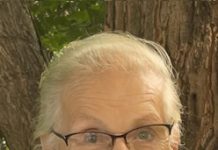Entitled to Service at the Expense of Basic Housing For Others?
A sincere thanks to T. Schwartz for the response and well crafted last words, as it only further supports and solidifies the exact argument put forth by the neighbourhood residents OPPOSING the telecommunication tower at 75 Lindsay Rd 40. It isn’t right for people to “think only of themselves and not the health, wellbeing, and human rights of others.” Case in point: Many full-time residents seeking RF (radiofrequency)-reduced environments for their homes and businesses, have INTENTIONALLY relocated to this specific neighbourhood to avoid cell towers in search of this rare RF reduced NBP (Northern Bruce Peninsula) community as part of their medical treatment and because this pristine environment aligns with their values, priorities, and endeavour to raise their children away from the ubiquitous radiation in city centres.
As per Dr. Riina Bray, MD, renowned environmental medical physician and medical director for Women’s College Hospital, “if the telecommunications tower at this proposed location is operationalized, up to 30% of residents are likely to become ill and forced to leave their homes, for some it could be life threatening.”
Access to safe shelter is a fundamental human right that should not be compromised by the convenience of additional wireless services for others, especially when alternatives exist for the majority of residents. Fibre optics are scheduled to roll out this year which would provide superior faster and more reliable connectivity – both wired and wireless, giving residents a choice. For additional support, I am informed that cell boosters work effectively in the Gillies Lake and Dyers Bay shoreline neighourhoods. For people who are injured, or face eviction due to the presence of cell towers, this basic right is violated. Preventing harm to residents is a top priority in municipal governance, regardless of the issue.
If one resides elsewhere, visits only seasonally, and knowingly purchased recreation land devoid of hydro and telephone services, is it reasonable to then be entitled to service at the expense of basic housing for others? Does one right take precedence over another? Could there be a win-win solution for ALL to have accessible and safe connectivity?
The Canadian Radio Television Communication (CRTC) mandate is intended to act as a guide to create accessible technology for EVERYONE (including those with RF related disability), both wireless and wired. By adhering to CRTC mandate practices, such as providing wired infrastructure for one community and wireless solutions for others, council can effectively safeguard the local interests of each community. These interests are elucidated in the BD24-10 report available to the public.
In the report, Shared Tower Inc. provided maps illustrating the radius of additional wireless signals near the current site location. Within the coverage radius, the majority of local residents are firmly opposed to the tower and have adequate cellular service using multiple varying service providers. The report correspondence illustrates that 28/32 respondents (within the coverage radius provided) are adamantly opposed to a tower at this site location.
53 other letters of support were received from outside the radius of coverage the cell tower will provide. If these areas wish to have improved coverage, supporting infrastructure must be located within those same specific areas.
Schwartz also echoed that the science is fairly clear. This, in truth, is based on outdated guidelines from 2015 and reflects only the thermal (heating) from 6 minutes of exposure to radiation. Remember there was a time we were told DDT, asbestos, and cigarette smoke were safe too! I feel blessed that a panel of Canada’s most esteemed experts in the field of environmental health and science (medical physicians, researchers and scientists with PhD, and directors of not for profit health and environmental groups) offered their time to delegate to and inform MNBP council regarding the past decade of peer reviewed scientific structures and urged them to vote non-concurrence to protect vulnerable residents, including children, elderly, pregnant women, those with neurologic chronic illness, autism, and electrosensitivity, as well as the wildlife in this neighbourhood.
Patrick Lima of the famous Larkwhistle Garden said it perfectly during the 2015 opposition in the same neighbourhood: “wrong structure, wrong place.” We are a unique community. If the 32 respondents within the coverage radius were asked to choose between a cell tower and pig barn, I’d bet my bottom dollar they’d vote pig barn.
Laura Vanderaa













